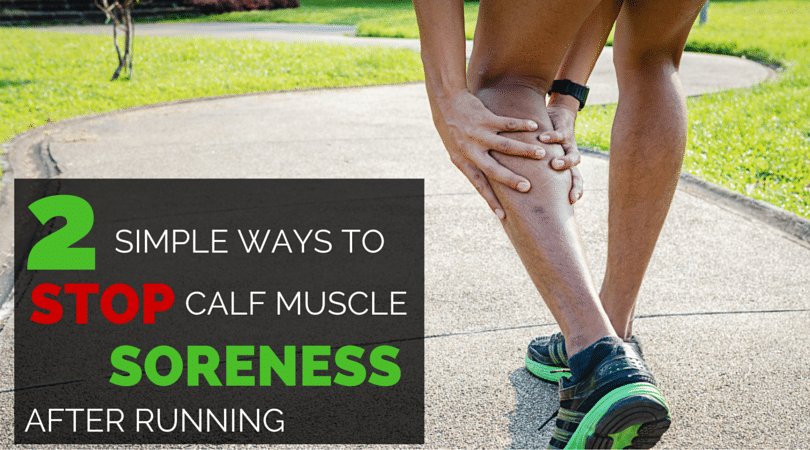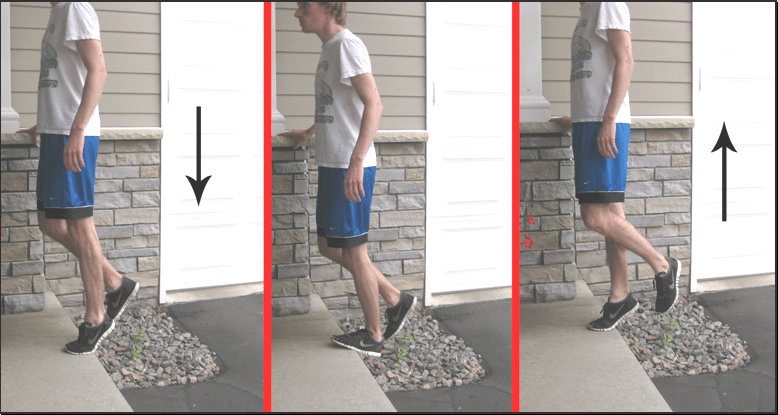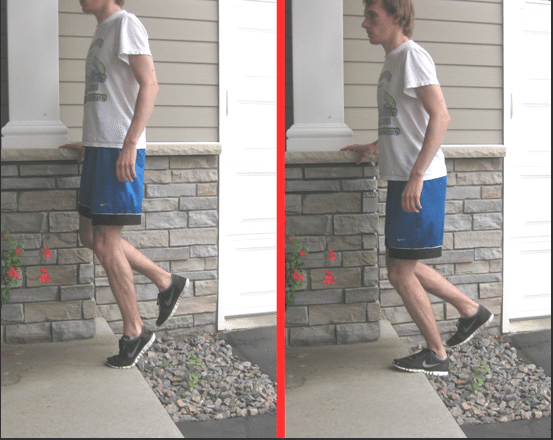Nicer running weather means more runners take to the streets to get their exercise in, and there are plenty of races to chose from all over the country to make the most of the racing season.
But many of us may have slacked off a little too much in the winter, missed a few too many days of training, and are now wondering just how much fitness we have lost.
But it is not really our fitness that pays the price in those first few runs, it is our muscles, and sore calf muscles after exercise can make even walking around painful, let alone thinking about running again!
If you are wondering what to do for sore calf muscles, you are in the right place.
In this article, we’ll look at some of the research on why the first few races make us so sore, and then provide you with the two best ways of treating sore calf muscles, so you can get back out running and enjoy the summer sunshine.

Why Do I Get Sore Calf Muscles After Running?
To understand the science behind why calves get so sore, especially after the first race of the season, it’s important to first understand the different type of contractions a muscle can produce.
There are three types of muscular contractions: concentric, isometric, and eccentric.
- A concentric contraction is when a muscle is moving against resistance in the direction it is contracting, like the “up” part of a bicep curl or the bench press.
- An isometric contraction is when the muscles are statically resisting a load, like when doing a “plank” exercise or a wall-sit.
- Finally, an eccentric contraction happens when a muscle is slowing down a stronger load in the opposite direction of the way it contracts—the “down” phase of a bicep curl or bench press, for example.
What Causes Sore Calf Muscles?
First, a little background:
As early as the 1980s, physiologists were discovering that not all muscular activities are equal when it comes to the damage they do to the muscle fibers and the resultant soreness.
Research was beginning to show that eccentric muscular contractions were significantly more stressful on the body and were more likely to result in soreness.
A 1991 study by Kroon and Naeije is a good example—in their study, five men performed concentric, eccentric, and isometric bicep exercises to exhaustion on three separate occasions.
For several days after each muscle-fatiguing task, the researchers used an EMG machine to analyze the effects of the exercises on the muscles.1
While the EMG signals to the biceps muscles recovered in a day or two after the concentric and isometric exercises, the eccentric contractions could affect muscular strength and coordination for up to a week.
Additionally, the subjects reported that soreness was most frequent and severe following the eccentric exercises.
How Does Gait, Speed, and Shoes Affect Calf Soreness?
Fortunately, doing some amount of eccentric training can guard against the soreness that often results after large bouts of it.
Here’s the deal:
Eccentric exercise causes more severe soreness because it results in more damage to the muscle fibers.
By gradually introducing eccentric loads on the muscles, soreness from eccentric activities can be reduced or eliminated, as reported by Karoline Cheung, Patria Hume, and Linda Maxwell in a 2003 review article.2
How is this relevant to first-race calf soreness?
We can discover the root of the calf-soreness issue with a bit of biomechanics.
Given that sore muscles are most often the result of large eccentric muscular contractions that your body is unaccustomed to, it becomes apparent that high eccentric loading in the calf is to blame for the soreness following your first races of the year.
During the gait cycle, the calf works eccentrically to absorb the energy of impact, storing some of it to be released when you push off the ground.
The degree to which your calf is loaded is dependent on the speed you are running, the shoes you are wearing, and the surface you are running on.
Now:
Obviously, a faster pace will cause increased calf loading.
But did you consider this?
Faster paces also tend to be associated with a footstrike that’s more forward on the foot, which itself increases calf loading—a true forefoot striker loads his or her calf more than a heel striker, for example.
Additionally, the heel height of your shoes can modulate the degree of loading on your calf.
In a standard running shoe with about a 12 mm “drop” from heel to toe, your ankle won’t be able to dorsiflex more than about 4° of plantarflexion when standing on flat ground if you’ve got a size 9 foot.
But in a racing flat with a 4mm drop, your ankle go through a larger range of motion, and the deeper your heel sinks down towards the level of your toes, the greater the loading on your calf.
In track spikes, the effective heel drop is negative, meaning your heel can sink to below the level of your forefoot!
At the same time, the softer the surface you are running on, the deeper your heel will sink into it.
A mushy springtime race on grass or dirt will make your heel sink further into the ground than a paved road, increasing calf loading. Compound this with high speeds and a low-heeled racing shoe and you can see where the calf soreness comes from!
How to Treat Sore Calf Muscles
Barefoot Running
Fortunately, the remedy for preventing this soreness is fairly basic: by gradually introducing faster running in lower-heeled shoes (or none at all), you can dodge the painful soreness that follows your early-season races.
If you’re not a minimalist runner or you find that transitioning to a minimalist shoe hasn’t worked for you in the past, you can implement a suggestion from Jason Fitzgerald, which is to run your post-run strides barefoot in the grass.
Dr Daniel Lieberman talked about this in detail when we had him on the podcast.
One of the benefits of doing a bit of barefoot running on grass every week is that your calves gradually accustom to the type of eccentric loading you’ll be taking while racing and working out in lightweight shoes, so you won’t get incredibly sore all at once.
Calf Muscle Exercises
Rather than choose between racing flats and running barefoot, doing some eccentric calf exercises off of a stair can also bolster your calf strength during wintertime when you can’t get outside to do some strides or jogging in spikes.
The “eccentric heel drop” exercise that is helpful when you’ve got Achilles tendonitis is also a good all-around strength exercise for your calves.
Exercise 1: The straight-knee eccentric heel drop.
Exercise 2: The bent knee eccentric heel drop.
If you’ve purchased our Strength Training for Runners program, you can also incorporate the Achilles Lower Leg Routine into your weekly training two or three times per week.
By performing these exercises during the weeks leading up to your racing debut, plus some easy running and light, quick repeats or “strides” either barefoot or in your racing shoes, will hopefully let you dodge the calf soreness that often accompanies your early-season races.






5 Responses
I’m not sure how you do it, but your articles are so timely! Thanks for sharing so much information with other runners.
Thanks for the great information. I agree that strengthening the calf muscles through barefoot running and exercises will help decrease post-race calf pain. I also think that it’s important for runners to take time to stretch calf muscles within 30 minutes after racing. Stretching has always helped me decrease delayed onset calf pain for me.
Done a 10 k today under 60 minutes! I run the the first 6 k in 32 minutes and was going well up to 8k. My right calf then started to tighten and had to walk and jog on the final kilometer and lost a lot of time. Just wondering what is the best treatment? I am limping at the moment. I did use ice. Jon F Lorinyenko
I have been battling calf pain on and off for years now. I guess that I’m a slow learner. For me its always directly related to the running shoes I’m using. I have many times tried to transition to thinner sneaks then inadvertently end up overdoing it (running too fast or too long and strain a calf). I eventually go back to a shoe with more of a heel to toe drop and no more problem. This being said, my advise is find out what the drop of your shoes is then get into a pair of sneaks that’s a little bit thicker in the heel . good luck w/ your running
– J
http://runblogger.com/2010/06/heel-toe-drop-or-offset-what-does-it.html
A great article. Very informative and clearly explains why my calves are in agony after the first few cross country races of the season. Do you have any remedies for loosing the muscles? At the moment they are super tender and walking is neigh impossible!
Cheers,
Rob